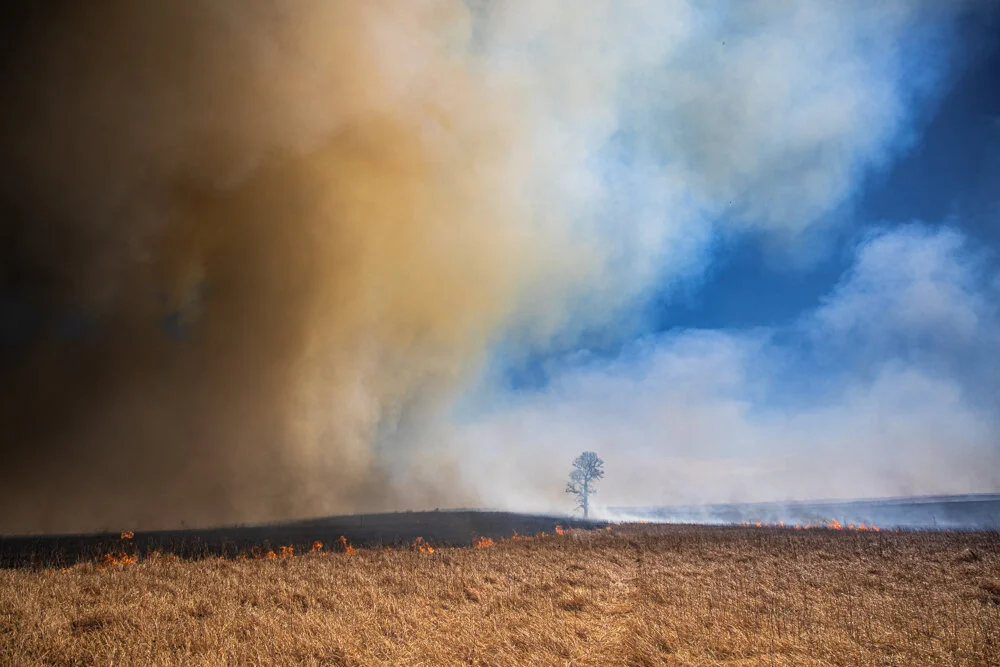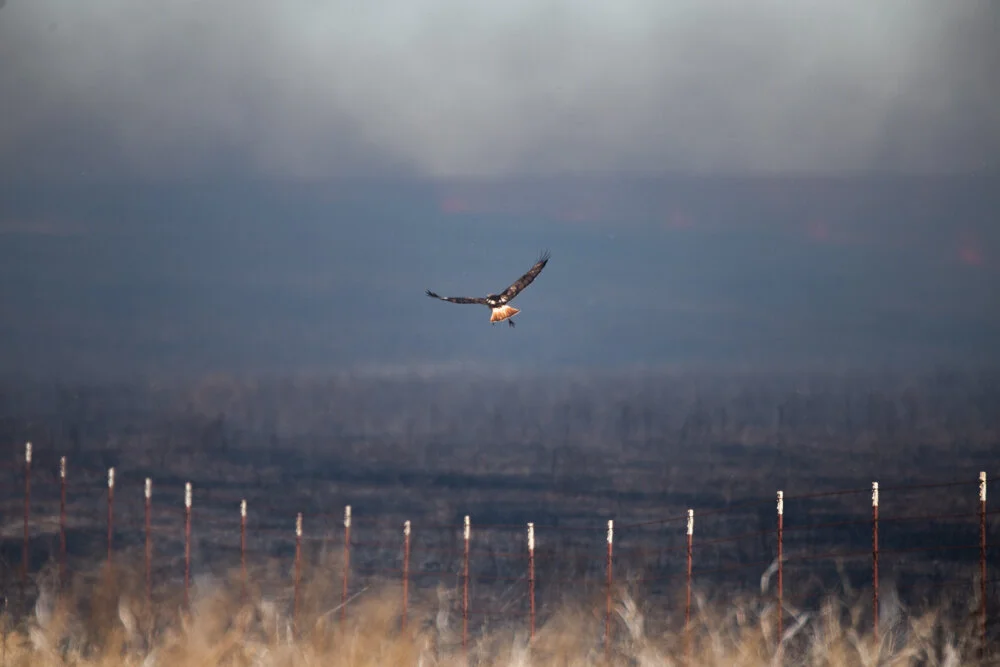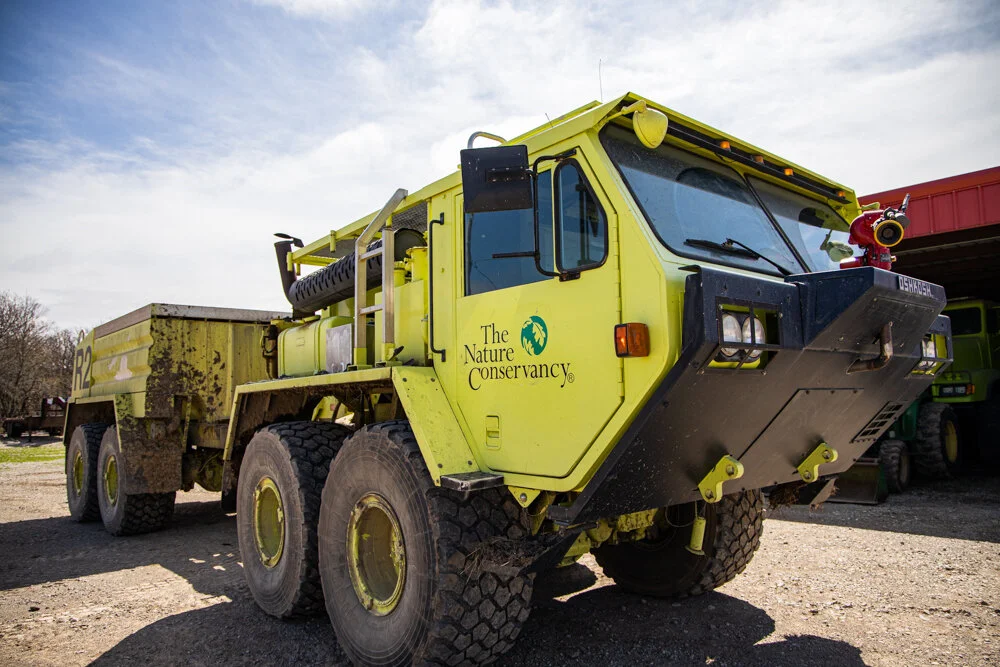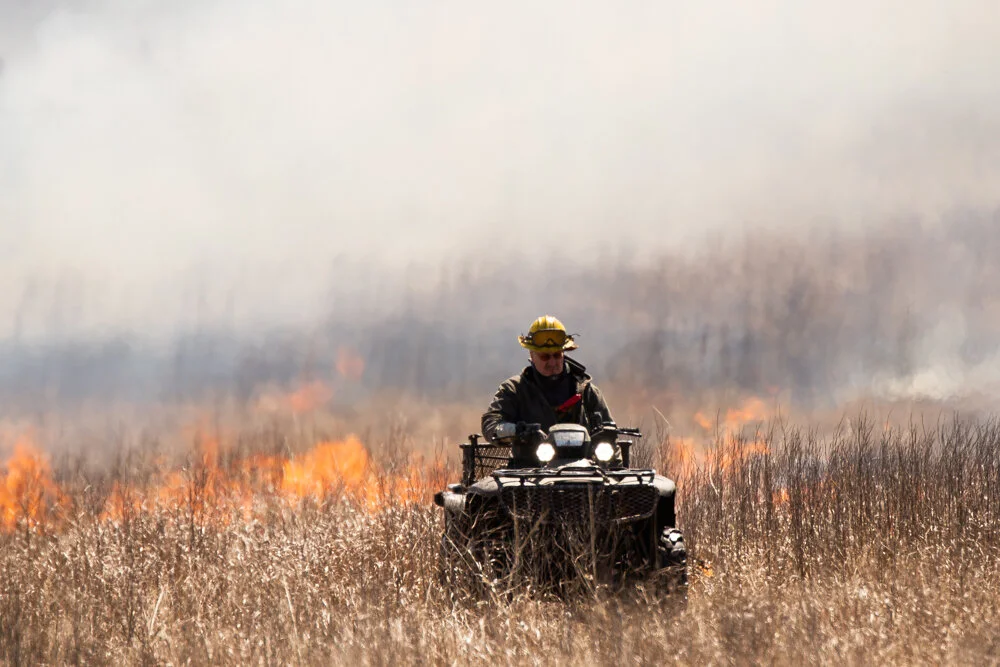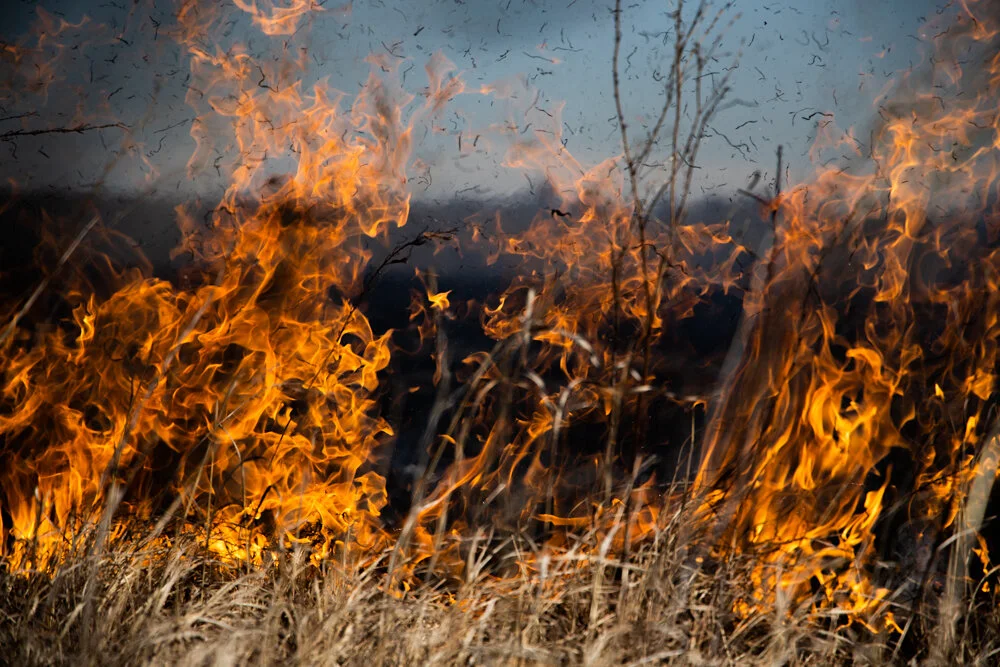Burning the Prairie
Have you ever been terrified with the sight of fire on the horizon?
Did you know that fire can be used in a healthy way?
Let's set the scene: You're pulling into the John H. Williams Tallgrass Prairie near Pawhuska, Oklahoma and you are admiring all the wildlife in the area. You see a bison calf over your left shoulder then you look over to the right and there's billowing smoke coming over the hill. The first thing you want to do is investigate, maybe call the fire department. More than likely, what is happening is something called a prescribed burn.
Don’t worry, no bison where near the fire!
Prescribed fire at Tallgrass Prairie
Though it may be scary to witness for the first time, prescribed burns are under the watchful eye of a burn boss. These burn bosses go through the same training as wildfire firefighters which means they know how to put the fire out and manage it accordingly. Equipped with water tankers, hardworking individuals, and drip torches, they set out to set the prairie ablaze.
Drip torch and other tools
One of the things you may ask is, why?
Well, for one the grasslands have many species of grasses and broadleaf plants like flowers that will overgrow and create an overabundance of fuel that if left unchecked, will burn very hot and fast. This means that it can be uncontrollable and if a wildfire ever does break out, it’ll be very hard to stop.
That basically means that they are burning at lower intensities more often so that if a wildfire happens, it will have less of a chance to get out of control.
Two, the ash that is created from the burning plants will blanket the ground, ad nutrients back into the soil and help germinate new plants. Think of it as its own fertilizer.
A very important note here is that when the fire happens on grasslands, it gives the land a time to regenerate itself and it does so very quickly. Take these next couple of before and after shots taken less than two months from the time of the fire.




One of the things that you don’t normally think about is the planning involved with prescribed burning. The men and women involved know the risks they are taking and make sure that they maintain the perimeter. They pay close attention to weather, moisture content, humidity and each others backs. No one wants to get caught out there by themselves.
Once the fire has passed and the clouds of smoke still linger, raptors start flooding back in to see what has been left behind.
One thing that some of you might be asking is what about all the carbon that is being released into the atmosphere?
That’s a good question and there is a good answer. There is definitely a fair amount of carbon that gets released into the air we breathe. But, when the prairie goes to regenerate itself, the process of growing all that vegetation back will start to draw that carbon back into the soil and be offset, even to the point that it draws more carbon than it released.
This can be a whole story on its own.


